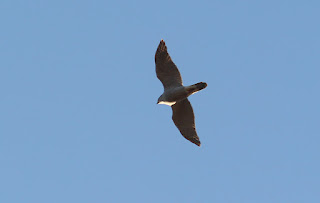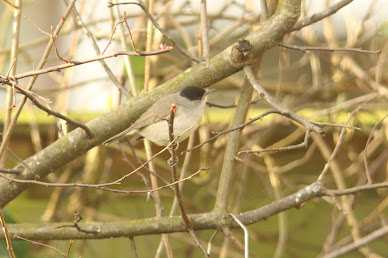New Year's Eve, and up early to drop Vicky and Addie at the railway station; they were heading to the Royal Albert Hall to watch the Nutcracker. Whilst I would love to see a Nutcracker, the ballet is not one of my top interests, so I planned to head out to Castle Howard for another look at the Ring-necked Duck - if it was still there - and hopefully get better views than I had the day before in the failing light.
Heading east down the A64 I received an incredible message: Walrus in Scarborough Harbour! What the ****?!
My mind raced, and instead of turning left towards CHL, I gunned east towards Malton and the coast.
A short ride later, and I arrived on to Scarborough seafront just before 9am. I drove north past a crowd of about 50 people peering over the railings into the harbour - this was a good sign! Finding a spot on the roadside, I legged it back to the south end of the harbour and joined the throng. To my amazement, there, only five metres a way, dozing on the cobbled slipway was a vast behemoth, complete with sabre-tusks: the Walrus! I was particularly impressed by his muzzle, covered in pencil-thick wiry bristles, which are apparently used for detecting food in the soft sediment of the seabed. His toenails were pretty cool too, a few inches in from the end of his leathery flippers. He was an impressive animal and every so often would lift his head to glance around with his tiny eyes, showing off his whopping tusks. He shuffled further up the slipway as the cold water of the rising tide lapped at his flippers.




The giant pinniped was totally unbothered by the assembled throng of admirers, letting off steamy breaths into the cold morning air. The gasps of awe and amazed smiles from the people around me added to the sense of wonder I felt, witnessing the first Atlantic Walrus to be seen in Yorkshire. What a privilege. This was a three year old male, named Thor, who was originally seen in Petten, Holland on 6th November, before travelling to Brittany and then north to the south coast of England, where he hung out at Pagham Harbour and Calshot in the middle of December. He hadn't been seen since, until pitching up on this slipway, late last night.
The local police and British Divers Marine Life Rescue had responded quickly and cordoned off the slipway. They were present in numbers making sure Thor was left in peace and that admirers were given information about him. Everybody present behaved impeccably and it was great to see the delight on the faces of everybody who saw him, especially the children.

I was absolutely stoked to see Thor, having missed one of his cousins on the Scillies in summer 2021 by one day! I hope this is a one-off and not some climate-related problem that these incredible creatures are facing in their Arctic homes, forcing them to wander south.
At the time of writing, Thor has made a reappearance; in the yacht club at Blyth in Northumberland (2-3 January). Hopefully his welcome will be as warm there, as it was in Scarborough.
------------------------------------------------------------------------------------------------------------------------
I headed off just before 10am and stopped off at Castle Howard Lake on the way past.
The Ring-necked Duck was showing beautifully at the west end (near the
road), busily diving with the Tufties. Lovely.
----------------------------------------------------------------------------------
Some more of Thor....



































